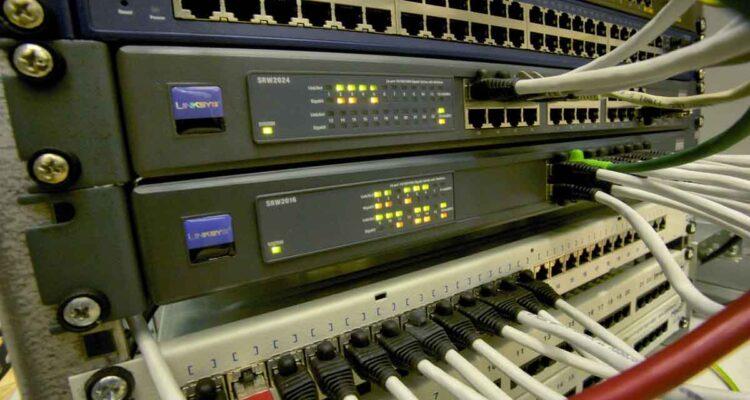Internet Protocol version 4 (IPv4) is a widely used protocol. It is used for communication between different devices over the internet. Internet Protocol version 4 has been around for over 30 years, and it is still the most commonly used protocol for internet communication, even though it is gradually being replaced by IPv6.
IPv4 addresses are 32-bit binary numbers, which are divided into four octets separated by periods. Each octet represents a number between 0 and 255, and each IP address is unique. There are approximately 4.3 billion possible IPv4 addresses. It might sound like a lot, but with the growth of the internet, this number is not sufficient to accommodate all devices that need to connect to the internet.
IPv4 address exhaustion has been an issue for several years, and it is one of the reasons why IPv6 was developed. IPv6 uses a 128-bit address format, which allows for approximately 340 undecillion unique addresses. This means that every device can have its unique IP address without the fear of running out of addresses.
Dominant protocol today is IPv4
Despite the growing popularity of IPv6, v4 is still the dominant protocol in use today. IPv4 has been in use for over 30 years, and it is deeply ingrained in the internet infrastructure. It is also more straightforward and more compatible with older devices, making it easier for organizations to stick to it.
IPv4 addresses are allocated by the Internet Assigned Numbers Authority (IANA) to regional internet registries, which are responsible for distributing IP addresses to internet service providers (ISPs) and other organizations within their regions.

The five regional internet registries are:
- American Registry for Internet Numbers (ARIN)
- Asia-Pacific Network Information Centre (APNIC)
- Réseaux IP Européens Network Coordination Centre (RIPE NCC)
- Latin America and Caribbean Network Information Centre (LACNIC)
- African Network Information Centre (AFRINIC)
ISPs then allocate IP addresses to their customers, who use them to connect to the internet. IPv4 addresses can be assigned dynamically or statically. Dynamic IP addresses are assigned by the ISP and change every time a device connects to the internet. Static IP addresses, on the other hand, are manually assigned by the network administrator and do not change.
IPv4 addresses are also classified into different categories based on their range. The three primary address classes are A, B, and C. Class A addresses are used for large networks. B Class addresses are used for medium-sized networks. Class C addresses are used for small networks.
IPv4 addresses are also divided into public and private addresses. Public addresses are routable on the internet and are used to identify devices on the internet. Private addresses, on the other hand, are not routable on the internet and are used to identify devices within a private network.
Limitations of IPv4
IPv4 has several limitations, including the limited number of available addresses, the potential for security vulnerabilities, and the lack of support for newer technologies. IPv6 was developed to address these limitations, and it is gradually being adopted by organizations worldwide.
In conclusion, IPv4 is a widely used protocol that has been around for over 30 years. Despite its limitations, it is still the dominant protocol in use today. It is deeply ingrained in the internet infrastructure. With the growing demand for IP addresses, the transition to IPv6 is inevitable, and organizations need to prepare for this transition to ensure continued connectivity and growth on the internet.

Shortage of IPv4 addresses
The reason for the shortage of IPv4 addresses is due to the rapid growth of the internet and the increasing number of devices connected to it. As the number of internet-connected devices has grown exponentially, the available pool of IPv4 addresses has dwindled.
In addition, IPv4 addresses are not evenly distributed around the world. Some regions, such as North America and Europe, have historically had more available addresses than other regions, such as Asia and Africa. This has led to a situation where some regions have exhausted their allocation of IPv4 addresses. Others still have a relatively large pool of addresses available.
To address the shortage of IPv4 addresses, a new version of the Internet Protocol was developed called IPv6 (Internet Protocol version 6). IPv6 uses 128-bit addresses, which provides a vast number of unique addresses that can accommodate the growth of the internet for the foreseeable future. However, transitioning from IPv4 to IPv6 has been slow and complicated, and many organizations and internet service providers continue to use IPv4 addresses to support legacy systems and devices.
Accessing cPanel Best VPS Buy VPS now CDN Cheap VPS Choose Linux Control panel cPanel for free cPanel guide cPanel hosting Custom Email Addresses Database Management Dedicated IP address Free control panels Improve SEO Linux Linux server Linux VPS MySQL database management system Optimize Images RAID 5 SSD Scalability and Flexibility Shared Hosting Use a Content Delivery Network Virtual Private Server VPS Auto installation VPS Hosting VPS hosting provider VPS in Europe VPS OS VPS plans VPS Server VPS server RAM VPS today VPS with backups Web hosting Website Management Website performance Website Using cPanel What is CLI? Windows Server Windows VPS WordPress easy WordPress today WordPress tools
